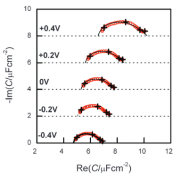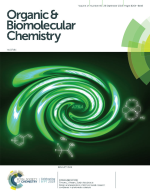
The interface between HOPG and 1-butyl-3-methyl-imidazolium hexafluorophosphate
The paper authored by
C. Müller, K. Németh,
S. Vesztergom,
T. Pajkossy and T. Jacob
is published in Physical Chemistry Chemical Physics (2016, vol. 18, pp. 916–925).
Abstract:
The interface between highly oriented pyrolytic graphite (HOPG) and 1-butyl-3-metyl-imidazolium hexafluorophosphate (BMIPF6) has been studied using cyclic voltammetry, electrochemical impedance spectroscopy, immersion charge measurements and in situ scanning tunneling microscopy (in situ STM). The results are compared with those obtained with Au(100) in BMIPF6 (Phys. Chem. Chem. Phys., 2011, 13, 11627). The main result is that the high frequency capacitance spectra on the two systems are similar to each other, however at low frequencies some slow interfacial processes cause the appearance of a second capacitance arc on Au(100), which is absent for HOPG. The slow processes are attributed to the rearrangement of the Au surface structure and to the formation of ionic liquid adlayers — these are visualized by in situ STM.
